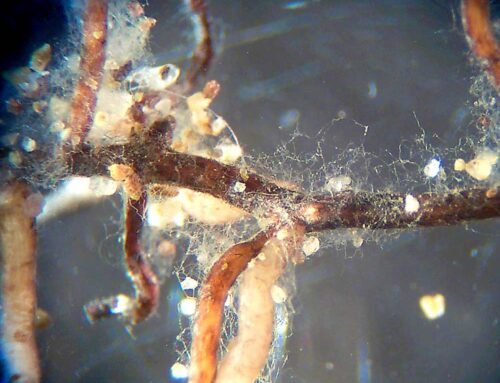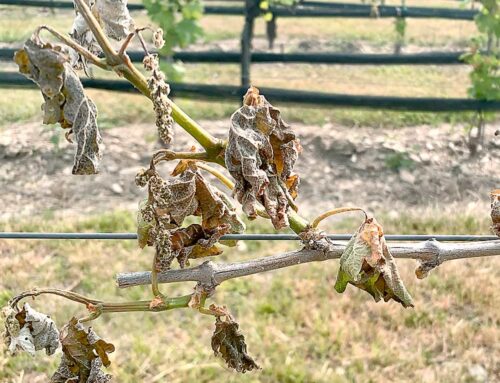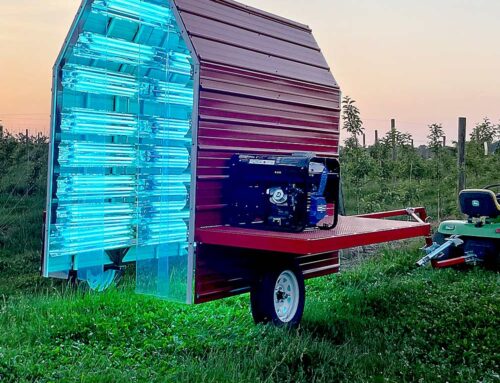Acreage devoted to wine grapes continues to increase in Washington, as does production, and still, prices are rising — all positive trends for the wine industry.
Washington growers harvested 227,000 tons of wine grapes on 51,770 acres in 2014. Early estimates courtesy of the Washington Association of Wine Grape Growers show growers harvested 233,288 tons on 53,353 acres in 2015.
Meanwhile, top wine-producer California saw a decline in production and continues to pull out acreage due to the ongoing drought, said Dr. Trent Ball, a partner in Agri-Business Consultants LLC and director of the viticulture and enology program at Yakima Valley Community College.
California production for 2015 is estimated at 3.8 million tons. “Almost every single region saw a decline, some almost 30 percent in production,” Ball reported at the Washington State Grape Society’s annual meeting in Grandview in November.
In Washington, the 2015 growing season turned out to be exceptional in another way, with the highest number of growing degree days on record — 3,157 — at Washington State University’s Irrigated Agriculture Research and Extension Center in Prosser.
In 2014, researchers there recorded 3,093 growing degree days, and the long-term average is 2,628.
Each variety responded differently to the intense heat, but sugar development and ripening happened quickly, Ball said.
“Some varieties had smaller berries and lower yields, while others came in higher than expected,” Ball said. “Fruit was allowed to hang a little longer, the sugars really climbed and the acids continued to decrease. The quality of the flavors is really solid.”
In the field
Growers are always looking for more heat, and it certainly came through in 2015, said Russ Smithyman, director of viticulture for Ste. Michelle Wine Estates. The 2014 growing season was the hottest in 50 years, and 2015 broke that record.
The heat came in a little differently in 2015, too, he said.
In 2014, growers saw some heat at the beginning of each month, but in 2015, the heat was spread out for a continual heating trend, which resulted in early development and an earlier harvest start and end date.
Harvest started for some whites in early August, “which is unheard of,” with really ripe fruit.
Fruit still required irrigation during the earlier harvest at a warmer period in the season. “We saw some issues if we didn’t keep up with irrigation — the fruit was starting to dehydrate and shrivel a little bit more than we would like,” he said.
But the heat also meant few pest or disease issues, Smithyman said. Because of the early season heat, Ste. Michelle was able to save a couple of sprays early in the season for powdery mildew, he said, and hardly any botrytis or rot issues presented in September and October. The early ripening also meant growers were able to get fruit off the vines before any freeze event.
“Any time we have a hot vintage, we consider that one of the good vintages,” Smithyman said. “Reds really do benefit more from the heat, though I’ve heard good things about some whites. Generally, it means a smaller berry size, a little bit less crop sometimes, but we saw more concentration of the fruit and great phenolics.”
Prices
The Washington State Department of Agriculture and U.S. Department of Agriculture will post prices in February, but the trend of rising prices is likely to continue, Ball said.
U.S. off-premise wine sales topped the previous year in 2015. Like other retail industries, the biggest sales occur during holiday seasons in November and December and again in the spring for Easter.
Sauvignon Blanc and red blends showed the largest sales growth rate in 2015, followed by sparkling wine, Pinot Noir, Pinot Grigio, Cabernet Sauvignon and Chardonnay. Nationally, Merlot and Syrah showed a decrease in sales, but Washington Merlot and Syrah showed positive sales growth, Ball said.
That Cabernet remains a hot variety is still good news for Washington, especially when the price point is taken into consideration, he said. “Our bread and butter is the higher price points, and those are all growing.” •
– by Shannon Dininny






Leave A Comment